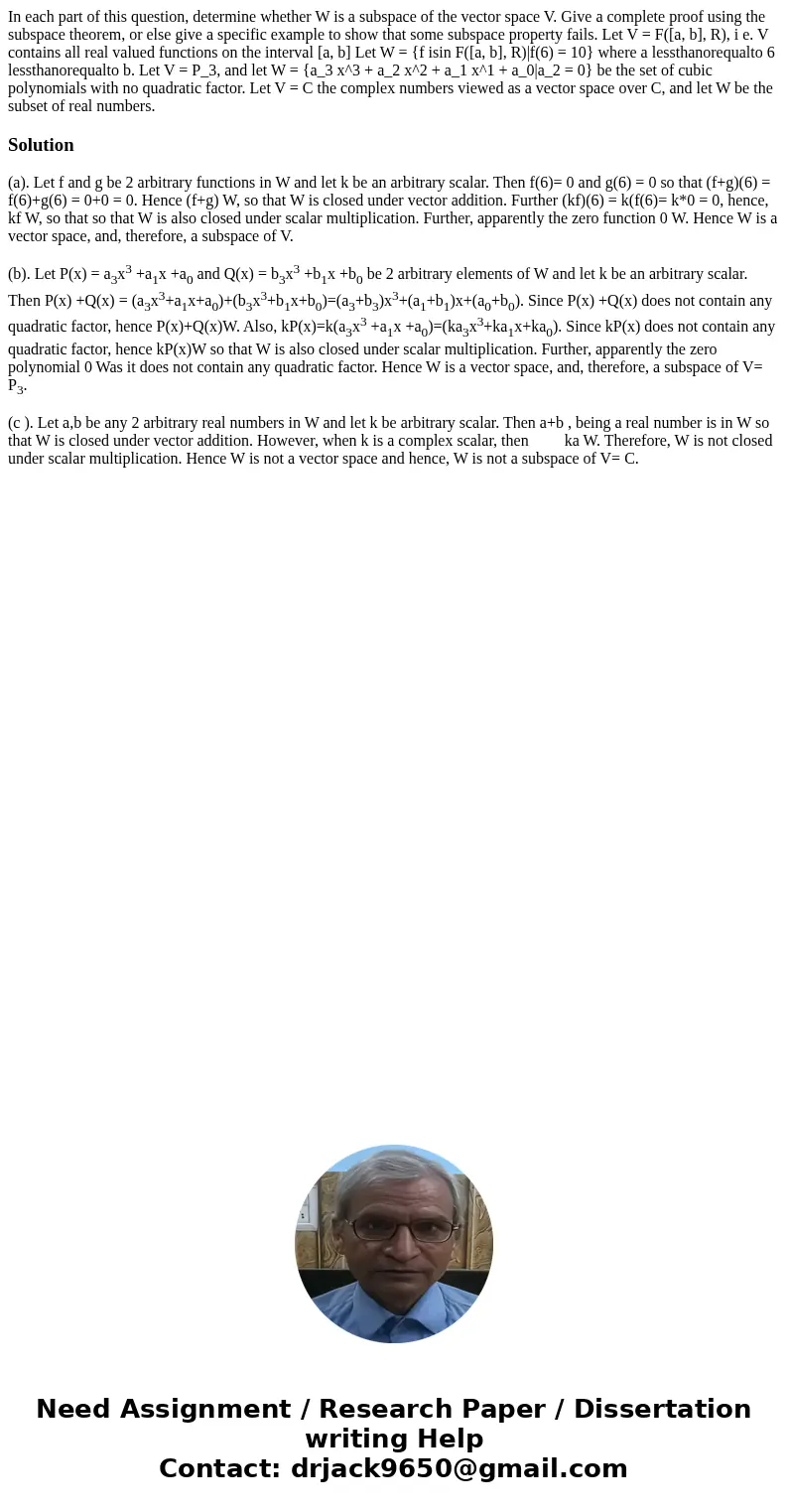In each part of this question determine whether W is a subsp
Solution
(a). Let f and g be 2 arbitrary functions in W and let k be an arbitrary scalar. Then f(6)= 0 and g(6) = 0 so that (f+g)(6) = f(6)+g(6) = 0+0 = 0. Hence (f+g) W, so that W is closed under vector addition. Further (kf)(6) = k(f(6)= k*0 = 0, hence, kf W, so that so that W is also closed under scalar multiplication. Further, apparently the zero function 0 W. Hence W is a vector space, and, therefore, a subspace of V.
(b). Let P(x) = a3x3 +a1x +a0 and Q(x) = b3x3 +b1x +b0 be 2 arbitrary elements of W and let k be an arbitrary scalar. Then P(x) +Q(x) = (a3x3+a1x+a0)+(b3x3+b1x+b0)=(a3+b3)x3+(a1+b1)x+(a0+b0). Since P(x) +Q(x) does not contain any quadratic factor, hence P(x)+Q(x)W. Also, kP(x)=k(a3x3 +a1x +a0)=(ka3x3+ka1x+ka0). Since kP(x) does not contain any quadratic factor, hence kP(x)W so that W is also closed under scalar multiplication. Further, apparently the zero polynomial 0 Was it does not contain any quadratic factor. Hence W is a vector space, and, therefore, a subspace of V= P3.
(c ). Let a,b be any 2 arbitrary real numbers in W and let k be arbitrary scalar. Then a+b , being a real number is in W so that W is closed under vector addition. However, when k is a complex scalar, then ka W. Therefore, W is not closed under scalar multiplication. Hence W is not a vector space and hence, W is not a subspace of V= C.

 Homework Sourse
Homework Sourse